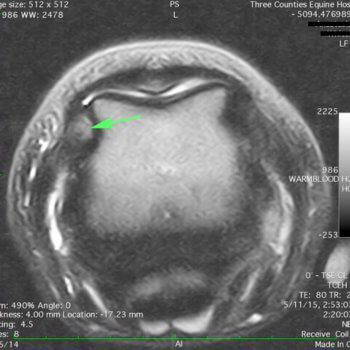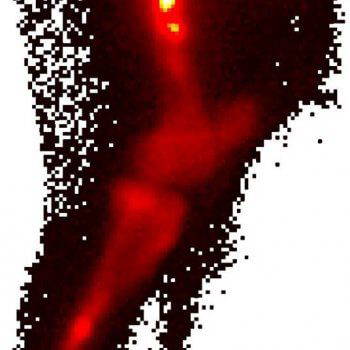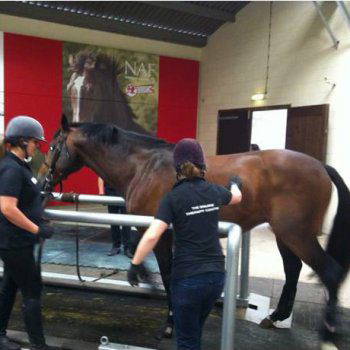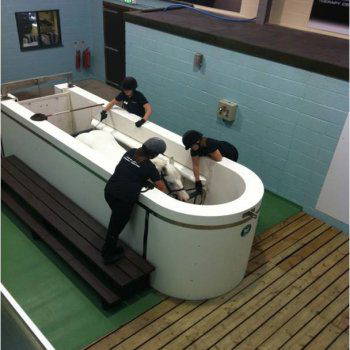As a veterinary surgeon it is hugely satisfying to see a horse with a significant injury respond well to treatment and to return to high level competition. Such cases can be a challenge to treat but by adopting a collaborative approach with the owner/rider, vet and often farrier/therapist all working together good outcomes can be achieved.
Every case is different and will require an individual rehabilitation programme as advised by the treating veterinarian but certain basic principles apply which will be outlined in this article. Such cases require time and patience, both of which may be in short supply especially when dealing with elite competition horses.
The first step of any successful rehabilitation programme is to achieve an accurate diagnosis for the presenting injury or lameness issue. This sounds obvious but it is crucial as an incomplete or inaccurate diagnosis will often lead to poor results. With advances in veterinary diagnostics we are able to be more accurate in our diagnosis, treatment and also crucially in our ability to offer a prognosis for a successful return to work. Our ultimate goal with rehabilitation is to return our patients to their previous level of competition however with some injuries this is not always possible. An accurate diagnosis from the onset not only helps us target our treatment and plan our rehabilitation programme but it will also ensure expectations are realistic.
Recent years have seen advances in veterinary diagnostics with Nuclear Scintigraphy (Bone Scan), high quality and portable digital radiography and ultrasound, together with advanced imaging modalities such as MRI and CT now commonly available. Potential treatments have also seen advances, particularly with the advent of “Regenerative Therapies” such as Stem cells, IRAP (Interleukin-1 Receptor Antagonist Protein) and PRP (Platelet Rich Plasma). These therapies harness the body’s own ability to heal and where used appropriately have increased our success in treating many commonly seen injuries.
Left: MRI image showing an injury to the medial collateral ligament of the coffin joint.
Right: Bone scan image showing a ‘hot spot’ over the mid femur which represents a potentially catastrophic stress fracture in this region
Any rehabilitation programme introduced post injury will be dependent upon the type of injury sustained and is often based on an individual vet’s personal experience. In the first instance a period of rest will often be required which may take the form of box rest or paddock rest. Some injuries will even require immobilisation in the form of a bandage/cast or complete restriction of movement in the form of cross-ties.
Owners and trainers are sometimes reluctant to box rest horses over extended periods of time for various reasons but studies have shown that a horse can maintain cardiovascular fitness and not sustain significant muscle loss following durations of up to 4 weeks box rest. By ensuring horses are rested in a clean, airy stable, where they can see stablemates and that their energy intake is reduced, any behavioural problems associated with extended periods of confinement can generally be minimised.
Following an appropriate period of box rest a period of paddock rest may be advised. At this point it is generally sensible to sedate the horse initially and confine to a small, flat, dry paddock with the size gradually increased over an appropriate period of time. Once a horse had been turned out it may be better to keep them out as combining box rest with periodic paddock exercise can often lead to excitable, uncontrolled behaviour each time the animal is turned out with subsequent risk of re-injury.
At the appropriate time depending on progress a gradually increasing programme of controlled exercise is generally introduced. At a point when good progress has been demonstrated post treatment a common rehabilitation programme may involved introducing 10 minutes of walking exercise daily, increasing by 10 minutes each week with a further reassessment after 4 weeks. In- hand walking is often difficult and dangerous so walking under saddle may be more manageable. Depending on the type of injury being treated horse walkers or treadmills can also be used to aid with a controlled, gradually increasing exercise programme.
Introduction of controlled exercise forms a crucial part of any rehabilitation programme and in some cases a period of time spent at a Therapy Centre with specialist facilities, such as a treadmill or water treadmill, can be of benefit
Regular monitoring is crucial to any successful rehabilitation programme so that it can be modified as required dependant on the individual horse’s progress. Following the demonstration of good progress after a suitable period of walking exercise, trot work and eventually canter may be introduced at an appropriate stage as advised by the treating veterinarian.
Many equine disciplines require a high level of fitness which can only be achieved with a fully sound horse. If an injury is not given sufficient time to heal especially when attempting to reintroduce to such disciplines then re-injury is likely to occur. Patience is therefore important along with a realisation that individual horses will heal at different rates dependant on many factors.
Such cases can require a huge commitment on the part of owners/rider both in terms of time and finances. Where consistent work cannot be achieved results can sometimes be disappointing. Not everyone has the time to commit to an extensive rehabilitation programme and in some circumstances a period of time at a specialised therapy centre or rehabilitation yard may be of benefit.
As mentioned at the start of this article a collaborative approach with all parties working together towards a realistic goal can yield significant results and prove hugely satisfying to all involved which will ultimately be to the benefit of our patients.
John Campbell BVMS MRCVS
Search
Recent Articles
- The Good, The Bad and The Ugly of Coaching
- Does your horse need more energy, especially when competing?
- Grade 1 International Para Dressage Rider Di Green- Why Lexi Needed a Year Off
- Louise Blanch – Driving Towards New Horizons with the Continued Support of the Para Equestrian Foundation.
- Kissing Spine – Prevention or Cure?
Categories
- Advice Hub
- Athlete
- Carriage Driving
- Dentistry
- Dressage
- Endurance
- Eventing
- Farrier
- Featured
- Featured Horse Ads
- Featured Posts
- Horse Racing
- Horse's Mouth
- Horseball
- Hunting
- Le Trec
- Leisure Riders
- Mounted Games
- Nutrition
- Polo
- Polocrosse
- Reining
- Rescue & Rehabilitation
- Show Jumping
- Showing
- Tack Room
- Team Chasing
- The Pony Club
- Therapy
- Training
- Vaulting
- Veterinary








